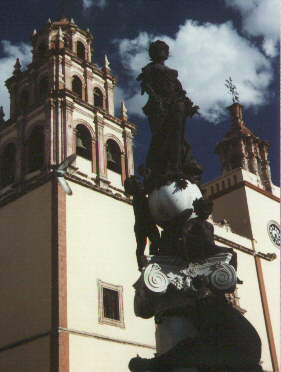- Guadalajara & Guanajuato

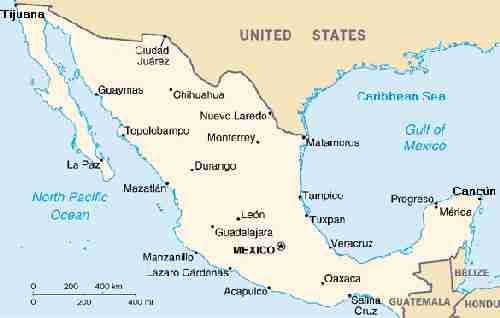
Puerto Vallarta
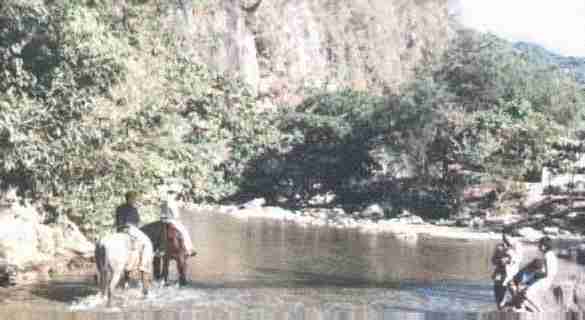
Watering the horses after a gruelling 1/2 hour ride along the back streets of Puerto Vallarta.
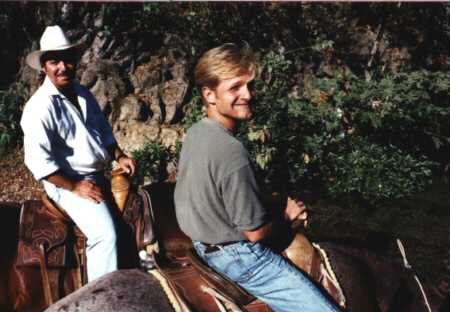
Wow, he actually looks quite relaxed here. You should have seen him bounding up and down when we tried to gallop.
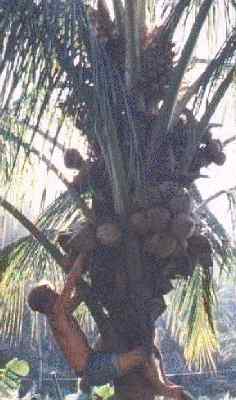
Tom had a craving for coconuts, and he'd do anything to get his hands on them... so the women tell me.
Guadalajara
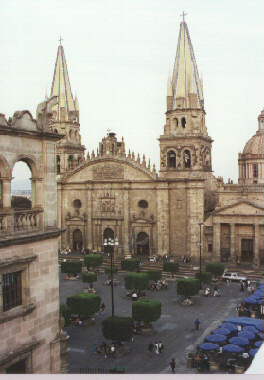
The huge cathedral in front of the tree plaza. Guadalajara is the second largest city in Mexico.
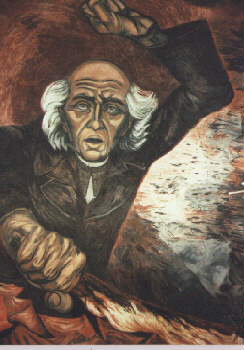
Painting of the famous priest Hidalgo. This man was the instigator of the war of independence. The painter, Orozco, captures him with his fist held high in a display of discontent under Spanish rule.
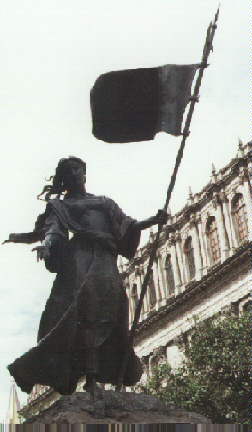
This lady, I believe, was the first woman to stand up and have her say.
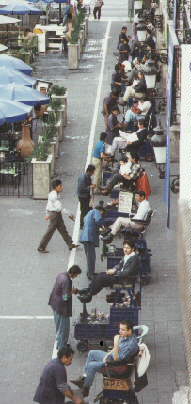
Shoeshiners everywhere! These guys were able to offer a little luxury to their customers with their elevated seats.
Guanajuato
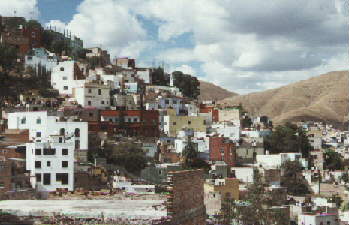
The steep hills of Guanajuato didn't stop the Mexicans from building their brightly coloured homes here. The hill is so steep that the houses seem almost to sit atop one-another.
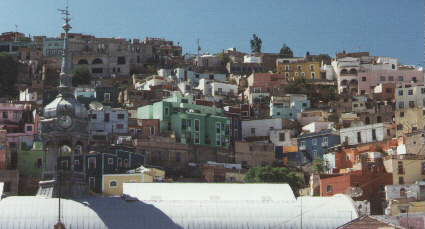
More houses. This was taken from near the Alhóndiga.
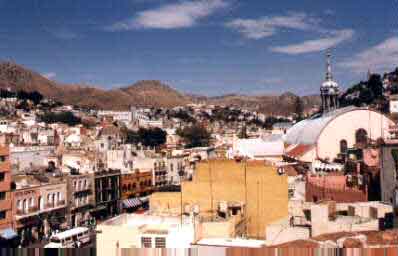
The view from the roof of our hotel.
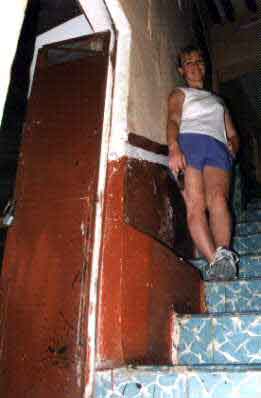
Here is Debbie standing in front of the doorway to our room. The surrounding hills are so steep, that you can enter the hotel at ground level, walk up 4 flights of stairs, open the window and step out onto the footpath at the side of the building.
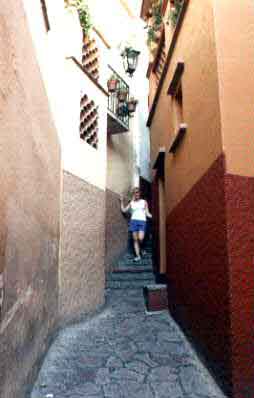
This street is so narrow that it is said that young lovers used to steel kisses across the street from the balconies.
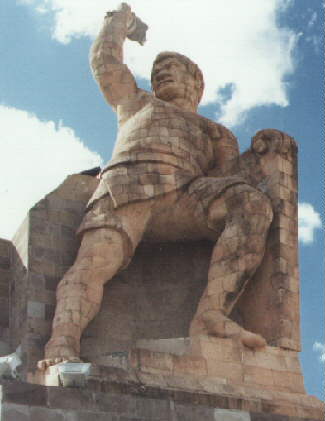
Over a period of 6 months, Hidalgo walked from town to town gathering support for his cause. He started with just a handful of men from his home town, and eventually had an army of 200,000. Hidalgo and his men bottled 400 Spanish troops in a building called the Alhóndiga. But his men, mostly the peasants of the land armed with sickles and such, had no way of getting past the hale of bullets. So this man named Pípila (pictured above), ran to the large wooden doors with a flaming torch in his hand and a protective stone roped to his back and set them alight. And although he was killed in the process, it allowed Hidalgo's men to storm in and kill nearly every Spaniard inside.
This marked the beginning of the war of independence.
At the foot of this statue is the inscription "AUN HAY OTRAS ALHÓNDIGAS POR INCENDIAR" - "THERE ARE STILL OTHER ALHONDIGAS TO BURN"
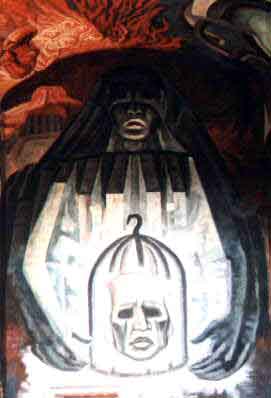
After the burning of the Alhóndiga, Hidalgo and three other leaders were captured and sent north to Chihuahua for execution. All four had their heads chopped off. Hidalgo additionally had his right hand cut off, as this is the hand that priests bless with. The governor of Guanajuato requested that the four heads be brought back to the state, where they were each placed in a cage and hung from the four corners of the Alhóndiga as a reminder to the people of the consequences of such acts. But instead, it reminded them of what these men had done for the people of the country. Their heads hung there for the next 10 years, until Mexico finally gained independence from the repressive rule of Spain, signalling the end of the 'War of Independence'.
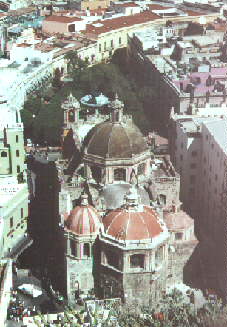
Iglesia de San Francisco con la Jardín de la Union frente.
- Rear view of the Church of San Francisco with the Union Garden in front.
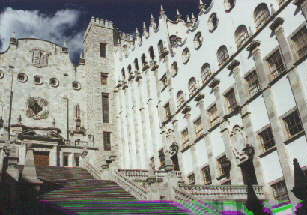
The University of Guanajuato. Off to the right there, through the doors and up to the top floor, is the Museum of Nature.

Inside the Museum of Nature. I'm holding a real (yes REAL) dried human arm (muscles intact), while Tom is getting pally pally with his buddy Skel (yes, that's real too). The guy behind, who runs the place, was so cool. He not only showed us freakish things like a dead Siamese kitten, a bull with one eye in the middle of it's head, a jar full of tape worms and a heap of other weird things, he even pulled a preserved human baby out of the jar and let us TOUCH IT!
Guanajuato is home to another quite unusual museum - Museo de las Momias, or The Mummy Museum. Very dry soil conditions, and the minerals present in this area provide a good environment for mummification.

The mother of this baby, or should I say foetus, died before giving birth, when she was 6 months pregnant. So in an attempt to save the baby, she was given a cesarean section. Needless to say the baby didn't survive, so it was buried with the mother. The museum claims this to be the youngest mummified human in the world.
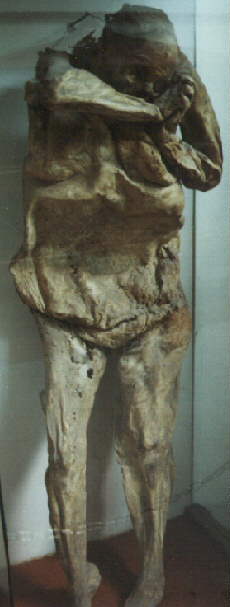
This lady, for some reason, fell into a state of coma while still alive. The doctors of those days considered her, and pronounced her dead. So they buried her. As usual, she was laid to rest on her back, facing up, with her arms on her chest. But when they exhumed the coffin, she was found in the position shown here. It was therefore assumed that at some time later, she awoke in her coffin, and after finding that she couldn't get out, turned over (in her grave) and found a comfortable position in which to die. Notice her knee out to one side, as one often does when lying in bed.
Also interesting, is that generally it is not possible to tell from the skeletal remains how large a person was. But here, it can be easily seen that this lady was fat.
